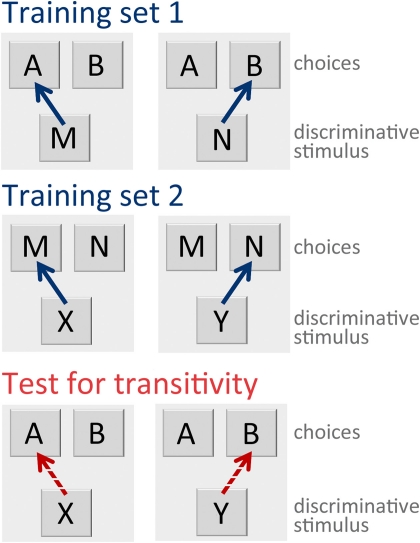Figure 4.
Illustration of the modified transitive inference paradigm that cannot be solved via pseudo-inference. In this version of the task, three items (e.g., faces, objects) appear on the screen in an upside down triangle on each trial. Participants are instructed to choose one of the top two items via button-press, and are told that the bottom item determines which of the remaining two items is correct. Two sets of these trial types are developed for training. As illustrated in the figure, when “M” is presented on the bottom (in training set 1) participants learn to choose “A”, and when “X” is presented on the bottom (in training set 2) participants learn to choose “M”. Once criterion learning has been achieved on all of displays presented during learning, the test for transitivity is administered. In this case, participants have not learned (i.e., were not trained on) the relationships among display elements, but must make an inference. Evidence for inference is obtained when, for example, participants choose “A” when “X” is the discriminative stimulus. In this case “X” and “A” are indirectly linked via “M”. As indicated in the text, this version of the TI task has no endpoints and cannot be solved using pseudo-inference.

